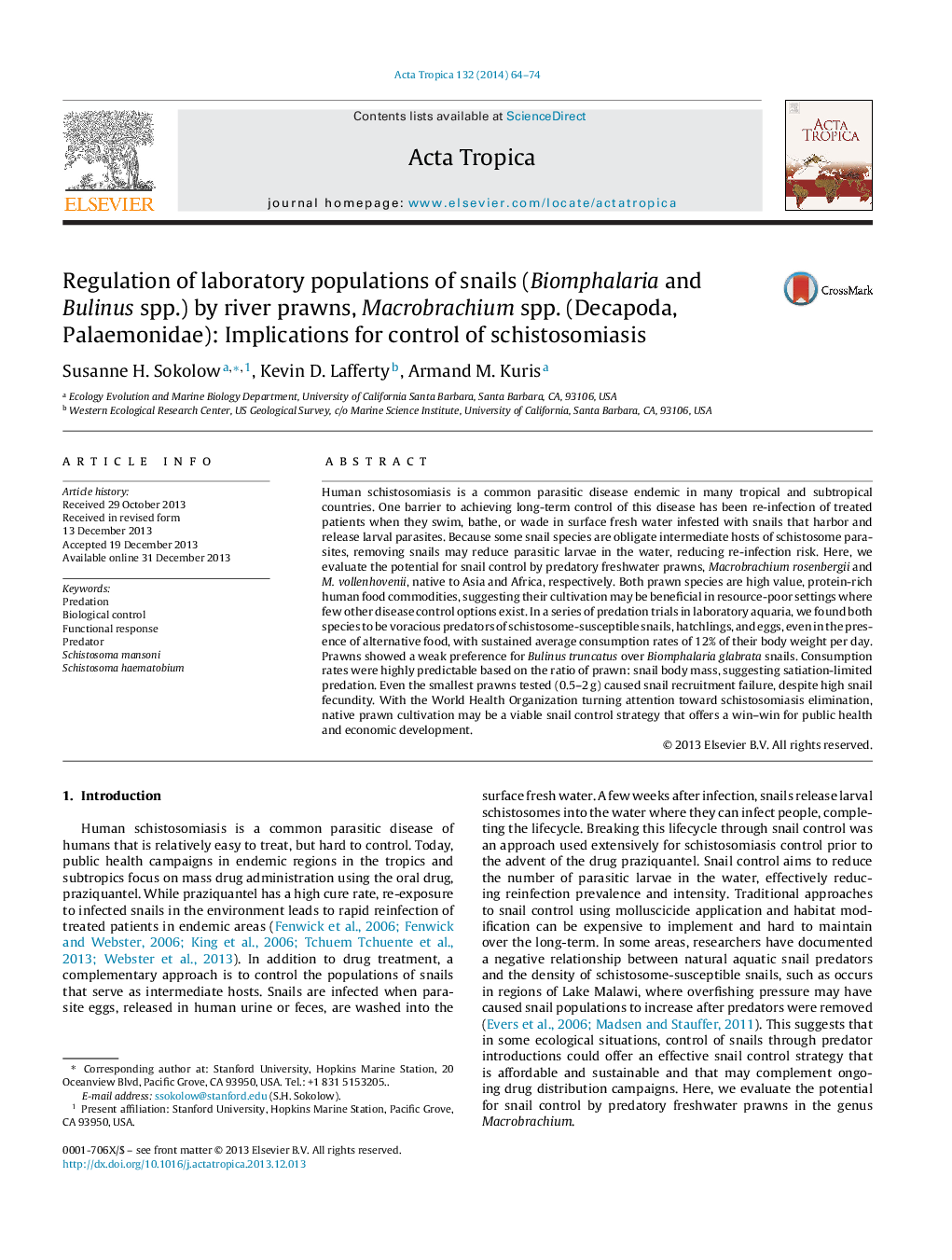| کد مقاله | کد نشریه | سال انتشار | مقاله انگلیسی | نسخه تمام متن |
|---|---|---|---|---|
| 3393811 | 1592791 | 2014 | 11 صفحه PDF | دانلود رایگان |

• We measured predation by two Macrobrachium spp. prawns on medically-relevant snails in lab aquaria.
• Prawns are voracious snail predators, consuming ca. 12% body weight daily in snails.
• Consumption rates are predictable given prawn: snail body mass ratio.
• Small prawns <2 g cause snail population recruitment failure despite a size refuge for large snails.
• We concluded that prawns may offer a valuable biological control option for schistosomiasis.
Human schistosomiasis is a common parasitic disease endemic in many tropical and subtropical countries. One barrier to achieving long-term control of this disease has been re-infection of treated patients when they swim, bathe, or wade in surface fresh water infested with snails that harbor and release larval parasites. Because some snail species are obligate intermediate hosts of schistosome parasites, removing snails may reduce parasitic larvae in the water, reducing re-infection risk. Here, we evaluate the potential for snail control by predatory freshwater prawns, Macrobrachium rosenbergii and M. vollenhovenii, native to Asia and Africa, respectively. Both prawn species are high value, protein-rich human food commodities, suggesting their cultivation may be beneficial in resource-poor settings where few other disease control options exist. In a series of predation trials in laboratory aquaria, we found both species to be voracious predators of schistosome-susceptible snails, hatchlings, and eggs, even in the presence of alternative food, with sustained average consumption rates of 12% of their body weight per day. Prawns showed a weak preference for Bulinus truncatus over Biomphalaria glabrata snails. Consumption rates were highly predictable based on the ratio of prawn: snail body mass, suggesting satiation-limited predation. Even the smallest prawns tested (0.5–2 g) caused snail recruitment failure, despite high snail fecundity. With the World Health Organization turning attention toward schistosomiasis elimination, native prawn cultivation may be a viable snail control strategy that offers a win–win for public health and economic development.
Prawns in the genus Macrobrachium are predators of Biomphalaria and Bulinus spp. snails, with predictable ecological functional response, suggesting they deserve consideration as biological control agents.Figure optionsDownload as PowerPoint slide
Journal: Acta Tropica - Volume 132, April 2014, Pages 64–74